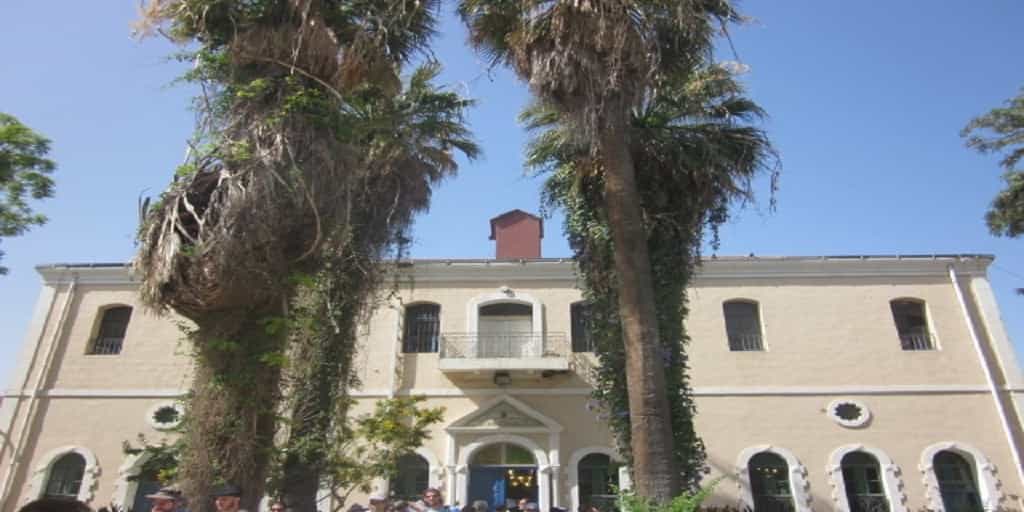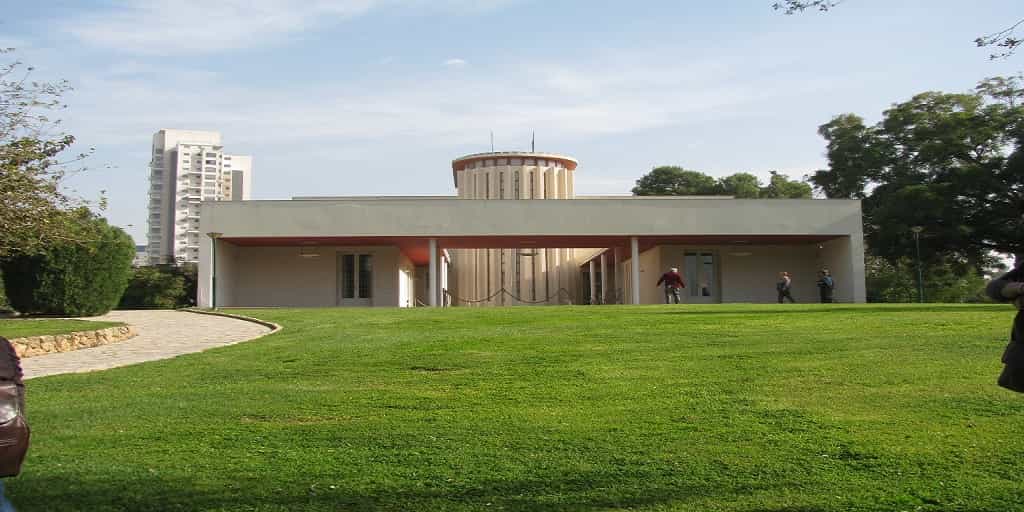First Aliyah to Israel trip
The First Aliyah to Israel Trip is one of my personal favorites. The First Aliyah was a time of building, exploring, and working hard. What is an Aliya? Before the State of Israel was established, there were 5 major waves of Jewish Immigration into the land.
-
The First Wave occurred during the years of 1882-1903;
-
The Second Wave occurred during the years of 1904-1914, when about 20,000 Jews moved to the land;
-
The Third Wave occurred during the years of1919-1923, when about 40,000 Jews moved to the land;
-
The Fourth Wave occurred during the years of 1924- 1928, when about 80,000 Jews moved to the land;
-
The Fifth, and last, Wave occurred during the years of 1929- 1939, when between 225,000- 300,000 Jews came to Israel.
The waves of immigration are called an ‘Aliyah,’ (or ‘Aliyot’ in plural). Each individual aliyah had its own impact on the country’s formation and creation. Each Aliyah to Israel established its own towns, communities, and institutions. During this tour we will focus on the First Aliyah, and learn about its impact on the modern State of Israel. We will discover some First Aliyah Towns.
Mikve Yisrael Agricultural School: The Beginnings of Israel’s agricultural innovation
We will begin our First Aliyah to Israel trip at the Mikve Yisrael Agricultural School. Mikve Yisrael Agricultural School’s principal established and built it in the late 1800’s. Its goal was to educate the children not only in general studies, but in how to toil the land and an produce agricultural industry. The school’s founders established it on the premise that to farm isn’t basic knowledge, you have to learn how to do it. This was the starting point for many who would later built farming communities in the north, and the launching point of Israel’s agricultural innovations! It started off with only one student, but it became so full that the students had get out of Ottoman military service by planting trees along the railroad. Graduates of the school established many of the First Aliyah Towns that still exist today.
While we’re there we will see the:
-
Wine Cellar,
-
Synagogue,
-
Machinery building,
-
Entrance to the school,
-
and more.

Rishon L’Tzion Museum and Well: the ‘Capital of the 1st Aliyah’
Rishon L’Tzion was the first city built in the First Aliyah in 1882. It’s beginnings were truly miraculous because the founders couldn’t succeed in building a well. But they didn’t give up either. The founders of Rishon L’Tzion, and other members of the First Aliyah, truly believed in rebuilding the State through building towns. They built the well, a school, the Carmel Winery, and much more. After all Rishon L’Tzion started as a First Aliyah town. Slowly it became the ‘Capital of the 1st Aliyah,’ and today’s 4th largest city! We are going to:
-
Explore the city’s beginning through the well, the museum and more!
-
Discuss how the Rishon L’Tzion founders were so successful.
-
See what about the city allowed it to become the 4th largest city in the country.
Check out more about Rishon L’Tzion!
Weizmann Science Institute: Israel’s early and modern roots in Science
We will then continue our First Aliyah to Israel trip at the Weizmann Science Institute. The Weizmann Science Institute is one of the country’s, and world’s, finest research universities. It was founded in 1934 by Israel’s future First President Chaim Weizmann and a team of scientists. Weizmann was a scientist, a chemist to be exact. He believed that Israel had the potential to become a great scientific center. He was right, Israel became a great scientific center. There are many high-tech companies, scientific and medical inventions coming from Israel. The Institute has since become one highly ranked and respected worldwide. Today the Weizmann Institute has programs in mathematics, computer science, physics, chemistry, biochemistry, and biology, as well several interdisciplinary programs. By touring the campus, the Visitor’s Center, and the Science Park will explain the history and roots of Israel’s booming science industry in the 21st century!
Check out more about the Institute!
Lunch in the shaded campus of the Weizmann Institute
After touring the Institute and before continuing our First Aliyah to Israel tour, we will eat lunch in the shaded lawns of the campus. We will take packed lunches from the bus, and have a relaxing picnic under one of the 100 different kinds of trees planted on the Weizmann Institute campus.
Chaim Weizmann’s Presidential House: An Early Initiator
Chaim Weizmann was a great chemist, Zionist, and Israel’s first President. He founded the Weizmann Institute on the same property as his house, so he could participate as much as possible in the Institute. But why did he choose to live in the city of Rehovot? Because he wanted to be as close as possible to Yavne, where the Sanhedrin sat. The Sanhedrin was a group of leaders for the Jewish people after the 2nd Temple was destroyed. Weizmann saw himself and his fellow Jewish leaders as a modern version of the Sanhedrin.
Weizmann could have been buried in the Mount Herzl as the president of Israel. He chose not to, and rather to be buried on his property behind his house. Weizmann deeply believed in the land of Israel and its promise to develop and grow. He saw himself as one of the people, not as someone higher up. Therefore, he decided to be buried on his property, and not the national cemetery. His house and private grounds demonstrate his love and investment in the State. Learn more about Chaim Weizmann!

Ayalon Institute: Fighting the War of Independence in Secret
The next stop in our tour of First Aliyah to Israel jumps forward in history a little but. The Ayalon Institute was an underground, secret factory; a site where bullets for guns were produced for the Jewish Force in the War of Independence. Why was it done in secret? Because it was illegal in British Mandate for people to carry and produce weapons of any kind. There was too much tension and violence between the Arab and Jewish populations. But the fighting continued, and the Jewish forces needed a supply of bullets!
Despite all odds, the factory succeeded producing thousands of bullets! Other members of the Kibbutz didn’t even know it was happening. They built the factory under the laundry and bakery. The workers only went in and out when the workers of the bakery and laundry weren’t there. And why did the armed forces build factory where it was? Because the noise of the buildings on top covered up what was going on underground! Without the hard work of the factory workers, the results of our fight for Independence could have ended up very different!!
For a preview of this stop, click here!
Walking tour of Mazkeret Batya: 1st Aliyah Religious Zionism
Our last stop of our First Aliyah to Israel trip is a walking tour of the town of Mazkeret Batya. What makes this town a little different than other First Aliyah towns is the religious element to its foundation. Rabbi Mohilever played a large role in this. Rabbi Mohilever was a great Zionist, even convincing Edmond de Rothschild to jump on board the Zionist cause. The combination of religiosity and Zionism can be seen along side the other typical First Aliyah characteristics of the town. We will see many aspects of the town including:
-
the Synagogue,
-
the well,
-
a War of Independence memorial,
-
AND the architecture.

Drive to Tel Aviv
After touring Mazkeret Batya and finishing our First Aliyah to Israel trip, we will return to Tel Aviv for dinner and check in into our hotel, in the ‘Capital of the 2nd Aliyah.’ 😉 Hopefully you will have seen the wonders and beauties of the First Aliyah, and we will begin to understand how dedicated the people were to building a state in the Jewish homeland.
If you want to see some of my other groups, including the First Aliyah to Israel trip, feel free to check out my Facebook page and albums! While your at it, read my blog about the First Aliyah to Israel! Book you next flight to Israel, and let’s plan your trip!